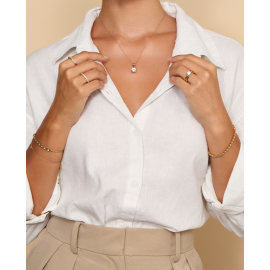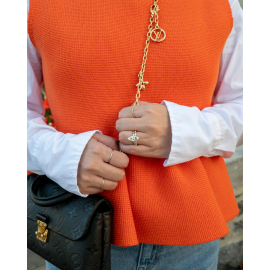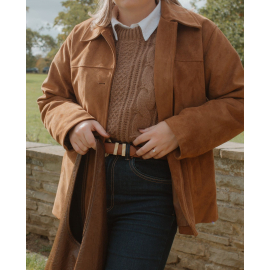Price match guarantee

We’ve teamed up with Klarna to provide flexible payment options, allowing you to shop the way you want. With Klarna, you can split your payment into 3 instalments or choose to pay later, making your shopping experience smoother and more convenient. Your order total must be between £100 and £499 to qualify.

We’ve teamed up with Klarna to provide flexible payment options, allowing you to shop the way you want. With Klarna, you can split your payment into 3 instalments or choose to pay later, making your shopping experience smoother and more convenient. Your order total must be between £100 and £499 to qualify.

February 09, 2022 | by Admin
It is law within the UK that every item of precious metal sold such as Platinum, Gold, Silver is stamped labelling the item with the type of metal it is. Platinum pieces which weigh less than 0.5 grams, 18ct Gold and Palladium pieces weighing less than 1.0 gram and Silver pieces weighing less than 7.78 grams are except from hallmark.
At Diamonds Factory all our products are hallmarked as per UK hallmarking law from London Assay Office (The GoldSmith Company)
The Goldsmiths' Company Assay Office is the oldest assay office in the United Kingdom. It has provided hallmarking services since The Goldsmiths' Company was founded in the 1300s. The company received its royal charter in 1327 and ranks 5th in order of precedence of the 12 Great Livery Companies of the City of London.
Hallmarking dates back to the 1300s when Edward I of England passed a law requiring any item made of silver, which was offered for sale, to be at least of equal quality as that of the coin of the realm (silver currency). The wardens of The Goldsmiths' Company were tasked with visiting workshops in the City of London to assay (test) silver articles. If these articles were found to be below standard they were originally destroyed and the metal forfeited to the King. If they passed, each article received the King's mark of authentication - the mark of a leopard's head. By 1478, there were several hundred workshops and merchants manufacturing silver articles in the City of London. It was not possible for the wardens to visit them all so the merchants were ordered to bring their items to Goldsmiths' Hall for testing and marking and a permanent Assay Office was established in the building. This is the origin of the term hallmark - struck with the King's mark at Goldsmiths' Hall.
In 1544 the Goldsmith's Company adopted the King's mark as their town mark and the mark of the leopard's head is now internationally recognised as the mark of this assay office.
The Goldsmiths's Company Assay Office is still based at Goldsmiths's Hall and remains the oldest company in Britain to be continually trading from the same site. However, it also has two satellite offices; at Greville Street in Hatton Garden in the heart of the London jewellery quarter and within a high security complex near London's Heathrow airport. It now has a new off-site facility within the Dalston-based jewellery manufacturer, Allied Gold. This is the first time in the Assay Office's 700 year history that it has opened permanent hallmarking services on a customer's premises.
In addition to hallmarking, the office has now expanded its range of services to support the jewellery trade and enforcement authorities. It offers a variety of specialist analytical services including nickel, lead & cadmium testing, antique silver dating, non-destructive compositional analysis, plating thickness measurement and a melt and assay service for scrap precious metal carried out in their fully independent on-site laboratory. Other services offered are a jewellery valuation service, laser marking, trading standards assistance, high quality photography and a comprehensive range of training and educational seminars, lectures and specialist events.






A tennis bracelet is a versatile piece of jewellery that can elevate an outfit for a special occasion or give a classical modesty to a casual look. If you’re looking for how to style a tennis bracelet with a watch, look no further than the Y2K era. Owing to the 2000s fashion renaissance, tennis bracelets are coming back for 2022 – but they never go out of style.
What is a tennis bracelet
Tennis bracelets got their name following a 1987 US Open match, during which Chris Evert lost her linked band of pavé diamonds and paused the match to search for it. The bracelet style first became popular in the 1920s, when it was known as an eternity bracelet, owing to the small diamonds and thin precious metal chain going on for infinity. But following the fateful match, the world has known the piece as a tennis bracelet.
Layering on one wrist
Some people say that layering jewellery is a cardinal sin, but if you have the eye for it and the right advice, layered bracelets or necklaces can elevate an ordinary outfit into something personalised to you to show off who you are.
Wearing your tennis bracelet with a watch is definitely something you can do. Although, for men in particular, wearing two bracelets at once can carry a couple of risks:
Scratching your watch
Scratching your watch with the sharp diamonds in your tennis watch can happen. It not only impacts the aesthetic value of your watch, but it can change the value of your watch if you ever look to resell it. So wearing a tennis bracelet on the same side as a hard metal watch might not be the best thing to do.
Losing stones
The friction between your watch and tennis bracelet can result in the loss of stones from your bracelet. If you are wearing your watch on the same arm as your bracelet, avoiding friction by considering the placement of each piece is important to avoid damage to all your pieces of jewellery.
How to style a metal watch with a tennis bracelet
To wear a tennis bracelet with a metallic watch, it’s important to think about which metals you are putting together. Putting the same metals together (for example: silver with silver, or a gold bracelet with a gold watch) is the best idea if you’re dedicated to keeping your look a little more sleek or discreet, but is not a must. You can still create a harmonious look with mixed metals, such as silver and gold.
Mixing and matching materials
Avoid the metal matching minefield altogether by opting for a watch that isn’t metallic. Watches with leather or fabric straps are perfect for matching with a tennis bracelet. For example, matching a watch with a blue silk strap and a white gold tennis bracelet expresses a soft, elegant femininity that can be very wearable for any gender.
Don’t wear all the bracelets all the time
You can wear your tennis bracelet every day, but styling your tennis bracelet and watch together for everyday wear can be a bit intense. It’s fundamental to consider your wrist size when you’re wearing any kind of bracelet in multiples. For example, if you have slim wrists, wearing a bulky metallic watch and a tennis bracelet on the same arm can have the effect of cutting your arm shorter than the other.
So, thinking about which side you should wear your tennis bracelet on in comparison to your body is important – and remember, that unless you’re wearing bangles, no one should wear more than three bracelets on one arm at once.
Leave space
Lastly, when you’re styling your tennis bracelet with a watch, wearing thinner and smaller bracelets when you’re wearing more than one is a basic rule for showing off all your jewellery at the same time. If you’re looking for how to style a multi-row tennis bracelet, the rule of thumb is to make sure that it isn’t too tight and to wear your watch slightly underneath the bracelet.
Wearing a tennis bracelet with a watch isn’t a new phenomenon and there’s style inspiration all over the internet, from Pinterest to Instagram – there’s no shortage of ways to style your tennis bracelet and watch.